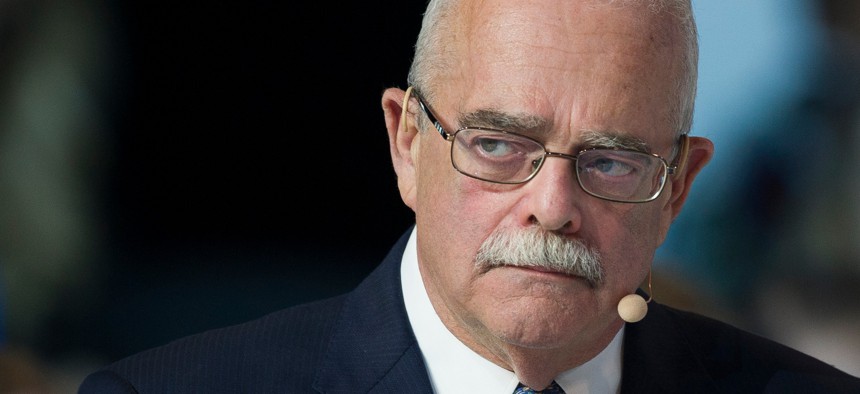Lawmakers: OMB ‘Skirting the Intent of the Law’ With New Data Center Policy

Rep. Gerry Connolly Cliff Owen/AP
The administration’s shift in focus to optimization, rather than closures, is not what lawmakers envisioned when they passed FITARA.
The Trump administration’s data center policy shifts focus from closing government-owned facilities to optimizing agencies’ overall data center and cloud environment—a shift that is not sitting well with lawmakers.
During a hearing on the latest scorecard on compliance with the Federal Information Technology Acquisition Reform Act, Rep. Gerry Connolly, D-Va., a cosponsor of the 2014 legislation, took the Office of Management and Budget to task for issuing a policy that is “skirting the intent of the law.”
“The intent of the law was always to identify how many data centers we have—which was a struggle—and then cut them in half, and then cut them in half again,” he said.
During the Obama administration, early inventories showed federal agencies had about 1,600 data centers in operation, Connolly recalled.
“What we got really good at was identifying more,” he said, with the number jumping into the tens of thousands. Connolly lauded that effort in transparency but said it reinforced the need to close as many as possible and move applications and workloads to the cloud.
Under the new Data Center Optimization Initiative policy—finalized Tuesday—the metrics for counting data centers changed drastically, according to Carol Harris, director of IT and cybersecurity issues at the Government Accountability Office.
“For example, OMB will no longer require agencies to maintain inventories of their smaller, non-tiered data centers, which make up about 80% of the government’s facilities,” she told the House Oversight Subcommittee on Government Operations during a hearing Wednesday. “The changes will likely slow down or even halt important progress agencies should be making to consolidate, optimize and secure their data centers.”
“What is it that OMB is doing in emphasizing optimizing and exempting from our audit, here, 80% of the data centers that exist?” Connolly asked federal CIO Suzette Kent. “Because we’re afraid that, whatever your intent, the consequence is we won’t capture that and we will not effectuate the savings the law was intended to encourage.”
According to Kent, as the data center count grew, it began to contain things that shouldn’t move to a cloud environment, such as printers, weather stations, MRI machines and “things that weren’t actually classified as a data center.”
“We also understand—and very clearly from talking with agencies—there are some reasons where we will continue to operate a data center: a super-computer site, something that is needed for resiliency, special needs of agencies that we believe are very important,” she said. “We want to ensure that those are being operated efficiently and securely with the intent of this committee.”
Kent also cited the need for application rationalization—the process for determining whether apps should be moved to a cloud environment, remain where they are or decommissioned and replaced. That ongoing work was cited in the finalized version of the administration’s Cloud Smart policy—released Monday—and the Application Rationalization Playbook developed by the federal CIO Council.
“Sometimes, with the best of intentions and trying to be flexible, we send signals we did not intend to send. That’s our concern,” Connolly said, adding that he agreed with all of Kent’s statements. “At the end of the day, yes, we want to be flexible. But what we felt—and I still do feel—we’ve got to set metrics. … What we obviously don’t want is a circumvention and a dilution of the goal.”
“We’re nervous ‘optimization’ gives a lot of wiggle room,” he said, suggesting agencies can use the new policy to argue for keeping all of their data centers. “You’ve used this weaker word, ‘optimization,’ which doesn’t really require me to do something specific. … My experience is sometimes you’ve got to give very clear direction and set very explicit metrics in order to accomplish something.”
“We’re being extremely explicit,” Kent countered, citing language in the policy that requires written justification and approvals from OMB in order to keep existing data centers.
Rep. Mark Meadows, R-N.C., the ranking member, echoed Connolly’s concerns, worried that agencies would be able to “game the system” under the new policy, leading to better grades on the scorecard but not actual closures.
“The word ‘optimization,’ when we look at that: You can optimize this and that doesn’t mean we’re actually changing anything,” he said.
Meadows asked Kent to work on specific guidance for the committee and GAO on what optimization will mean, agency by agency.
“Because what it means to one agency will be very different than another, and probably should be different,” he said.






